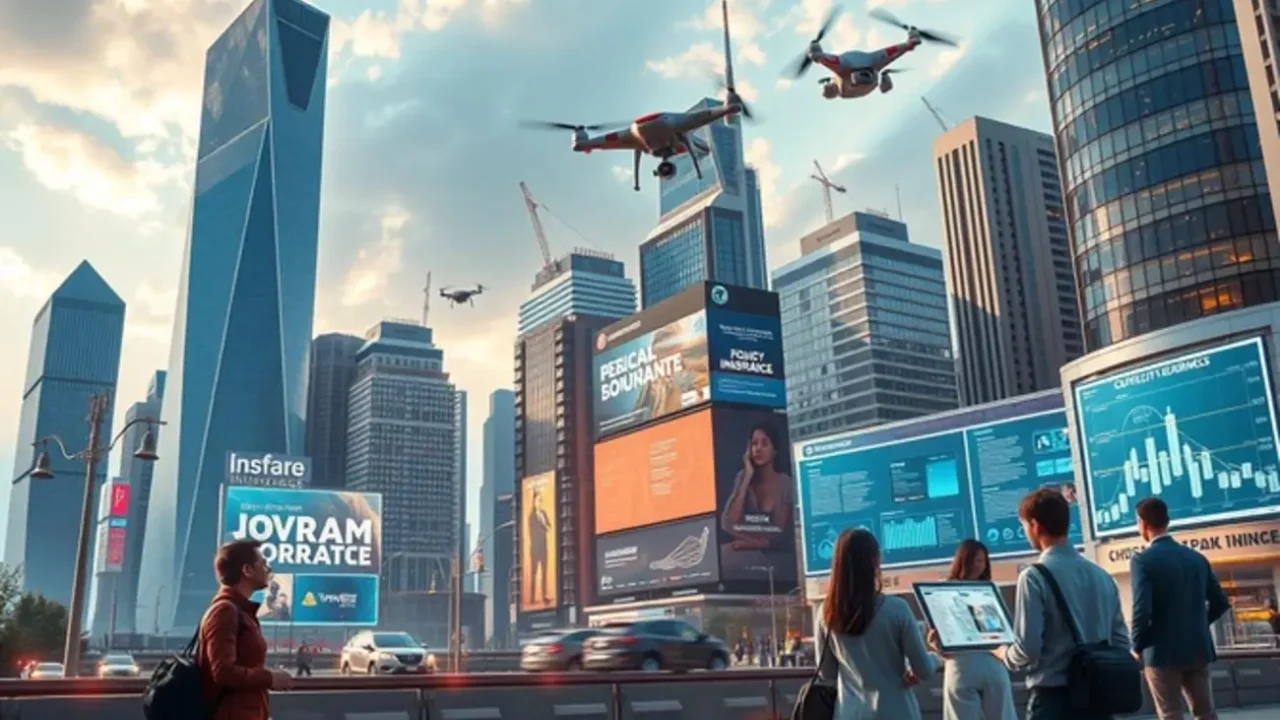The insurance world is changing fast, thanks to many factors. Carriers are now focusing more on what customers need. They want to help prevent problems, not just fix them.
By 2030, the big change will be from fixing problems to stopping them before they start. This will change everything about insurance.
New tech, especially AI, will change insurance a lot. It will change how companies sell, price, and handle claims. To keep up, companies need to use new tech, learn new skills, and be open to new ideas.
The future of insurance is about being strong, quick, and focused on customers. Insurers must be ready to face new challenges and seize new chances. This way, they can stay important and meet the needs of a changing world.
Table of Contents
The Digital Transformation of Insurance Services
The insurance industry is changing fast, thanks to new technologies. AI-powered underwriting and risk assessment are big steps forward. They help insurers understand risks better and offer prices that fit each customer’s needs.
Connected devices and real-time data analytics are also making a big impact. Soon, there will be one trillion connected devices. This means insurers can offer services that really fit each customer’s life.
Smart Contracts and Blockchain Integration
Smart contracts and blockchain technology are making insurance faster and more secure. They automate claims and make sure payments are correct. This saves time and money, making customers happier.
The industry’s digital change goes beyond tech. It includes using robots and 3D-printed buildings. These changes help insurers offer new products and services. Keeping up with these technologies is crucial for staying ahead and serving customers well.
“Digital transformation is not just about technology; it’s about fundamentally changing the way we do business and how we serve our customers.”
Future of Insurance: Emerging Coverage Types and Solutions
The insurance world is changing fast, with new types of coverage and solutions. These are designed to meet the needs of today’s consumers. With the world getting more connected and data-driven, insurers are using new tech to offer better products.
Parametric insurance is a big deal in the insurance world. It pays out based on specific events or thresholds, not just damage. This means fast payouts and clear information, making it popular for those wanting quick protection.
Microinsurance is also growing. It’s small, affordable coverage for people who need it most. It breaks down big insurance into smaller, easier-to-get pieces, helping more people protect themselves.
Embedded insurance is another trend. It’s insurance built into other products and services. This makes things easier for customers and creates new chances for insurers to make money by working with other companies.
“The insurance industry is poised to become more embedded, connected, cooperative, immersive, and co-created with customers in the upcoming decade.”
These new types of insurance are changing the industry. They offer better, more personal, and easier-to-get protection for many risks. The future of insurance looks bright and promising.
Climate Risk and Sustainable Insurance Models
Insurers are working hard to find solutions for climate change. They offer services like resiliency and parametric coverages. They also use advanced sensors and wearables for quick risk checks.
They’re creating green insurance products to encourage eco-friendly actions. These products help buildings that use less carbon or energy. Insurers want to help people live in a way that’s better for the planet.
Environmental Risk Assessment Technologies
Insurers are teaming up with others to create new climate-resilient coverage solutions. They use advanced tools to predict the effects of disasters. This helps them offer better climate risk insurance to their customers.
“The number of natural disasters with high economic impacts has tripled since the 1980s, and less than half of the global natural disaster losses are covered by insurance.”
Climate-Resilient Coverage Solutions
New rules are making it clearer how insurers deal with climate risks. This is expected to make the non-life sector do better. By 2025, they might see a return on equity of 10.7% thanks to sustainable insurance.
The insurance world is using new tech and green products to help. They’re working with others to make communities more resilient. This is all part of their effort to help the planet and create a better future.
Conclusion
The insurance industry is changing fast, thanks to digital tech, AI, and data analytics. These tools are making services more personal, efficient, and focused on customers. New risks, especially those related to climate, are pushing for new products and ways to assess risks.
This shift is moving insurance towards predictive and preventive models. It’s changing how we see the value of insurance.
Insurers need to keep up with tech, meet customer needs, follow rules, and be green. This is key to staying ahead in managing risks. The future of insurance looks bright, with more openness, personal touch, and proactive risk handling.
This will help people and communities face the 21st century’s challenges better. They’ll be more resilient and confident.
The blend of future of insurance, digital insurance, and insurance innovation will guide the industry’s future. Insurers will use data, automation, and teamwork to offer risk solutions that are custom, quick, and good for society.


